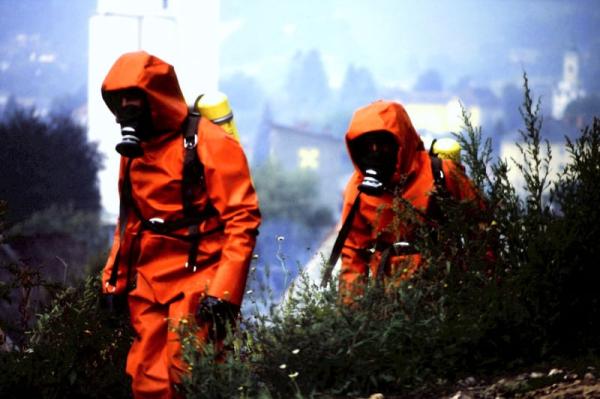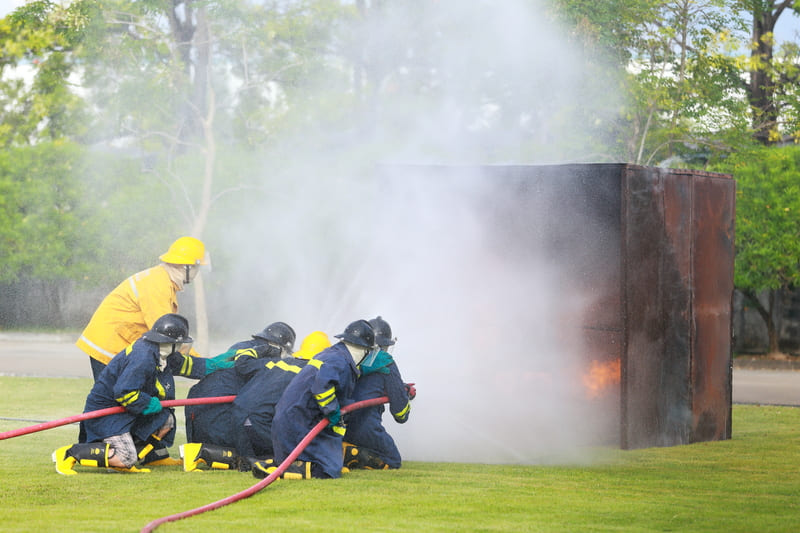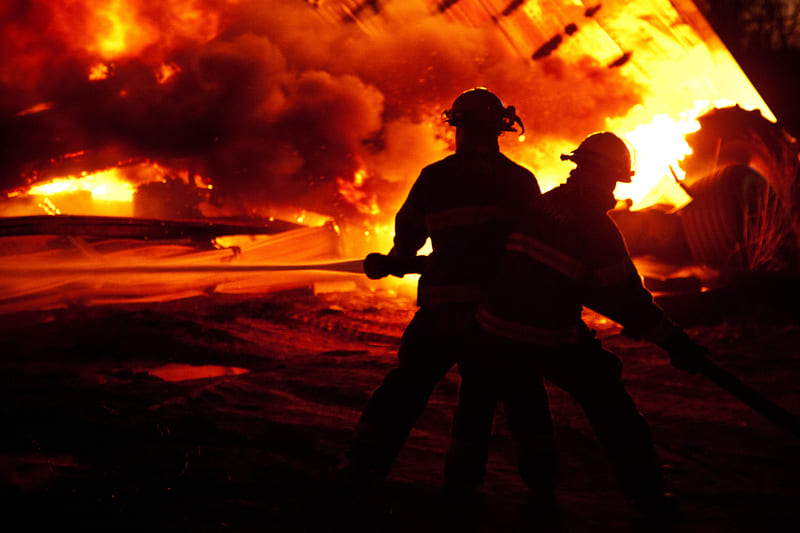Blog Post
The Evolution of Fire Fighting Training: Then Vs Now

Fire fighting is perhaps one of the most critical professions, a true vocational calling, designed to protect lives and property from one of Mother Nature's most destructive forces. The skills, acumen and knowledge required to be a successful firefighter have evolved tremendously over the past century, with fire fighting training moving from rudimentary, community-based efforts to highly-specialised, technologically advanced programmes.
In this article, we'll closely examine the evolution of fire fighting and how modern advancements have shaped the way today's fire fighting heroes are prepared to handle emergencies.
Early Training: The Basics
In the early days of firefighting, proper training was non-existent. In fact, communities commonly banded together to fight fires, relying on basic tools like buckets of water and simple hand pumps. The focus was on physical strength, teamwork, and fast response. These early firefighters had little to no formal training on the behaviour of fires, or control methods, and their techniques were often solely reactive.
Perhaps one of the most notable and memorable aspects of historical fire fighting training was the use of what is known as the bucket brigades. In a nutshell, citizens would line up, passing buckets of water from person to person, from the nearest water source right up to the blaze. While this method was effective during small-scale fires, it was not efficient for larger fires - city wide fires.
As urban populations grew and industrialization took over, the need for more formal training became apparent.

The Rise Of Formal Training
As towns and cities expanded, formal fire brigades were established, and along with them came the development of early training programs. By the 19th century, fire departments started to introduce basic training that included the use of new fire fighting techniques for fire containment and rescue, though much of this still relied heavily on teamwork and physical strength.
However, despite the formalisation of fire brigades, the equipment used was still very basic compared to that of today's standards. Firefighters commonly entered buildings set ablaze with minimal protective gear, relying on rudimentary leather helmets and woollen clothing, which of course provided very little protection against heat and smoke. Fire fighting in the past focused on brute force as opposed to strategy, with shockingly low emphasis on fire prevention or understanding how fire behaves.
Flash forward to today, and by comparison, modern training programs, such as those offered by us here at EMCARE, are highly advanced, ensuring that all trainee firefighters understand fire dynamics, suppression techniques, and how to use modern equipment like self-contained breathing apparatus (SCBA) and thermal imaging cameras.
The Introduction Of Fire Science
The 20th century saw massive and significant shifts in the advancement of fire fighting, mainly due to the development of fire science. Fire science introduced a deeper understanding of how fires start, spread, and how they can be controlled. It was this scientific approach that drastically improved fire fighting training by focusing on fire prevention, fire dynamics, and risk assessment.
Today, modern training includes comprehensive lessons on the "fire triangle" or the "fire tetrahedron", which explains how fires require heat, fuel, and oxygen to burn. Through proper understanding of how these elements interact, firefighters today are far better equipped to suppress fires effectively.
Additionally, the role of fire prevention has become an integral part of modern fire fighting training. Firefighters are not only trained to react to emergency situations, but also to conduct inspections on buildings for potential fire hazards and educate the general public on fire safety. It is this proactive approach to modern fire fighting that reduces the risk of fires breaking out in the first place.
At EMCARE, our modern fire fighting training includes an in-depth understanding of fire science and fire prevention. Our Intermediate Fire Fighting Course ensures that all cadets are equipped with knowledge and acumen required to combat fires effectively and safely, preparing them for real-world scenarios.
The Rise And Role Of Technology
It's without doubt that modern technological advancements have had a profound impact on fire fighting training. Today. Firefighters are trained to utilise cutting-edge tools and equipment that make fire fighting more efficient and safer. As mentioned above, this includes tools like thermal imaging cameras and drones that are able to survey large areas during wildfires or incidents involving hazardous materials, providing valuable data without putting firefights at unnecessary risk.
Perhaps one of the most significant technological advancements is the use of virtual reality (VR) in fire fighting training. VR allows trainee firefighters to experience realist fire scenarios in a controlled environment. This form of immersive training helps prepare firefighters for real-life situations without the risks associated with live fire training exercises.
Furthermore, modern fire fighting training also often includes the use of prediction software. This kind of software utilises algorithms to predict how a fire will spread based on current conditions such as wind speed, temperature, and the type of fuel available for the blaze to consume. This allows firefighters to plan their response far more efficiently, improving outcomes and reducing the damage caused by fires.
At EMCARE, our students receive cutting edge training in fire fighting techniques and can handle even the most complex fire emergencies.

Specialised Fire Fighting Training: From Hazmat to Wildfires
Another significant advancement in modern fire fighting training is the introduction of specialised training for the different kinds of fire. In the past, all fires were treated the same, regardless of whether they happened in a residential area, industrial area, or involved hazardous materials. However, today modern firefighters undergo specialised training to deal with the many specific types of fires and emergencies.
For instance, hazmat training teaches firefights how to effectively respond to incidents involving hazardous chemicals or materials, ensuring that they are able to handle these situations in a real-world setting safely and efficiently. In a similar fashion, wildfire training equips firefighters with the knowledge and skills required to control and contain fires in rural areas, through techniques such as controlled burns and fire lines.
In today's modern world, where urban and industrial environments are constantly expanding and evolving, specialised training is more vital than ever before. Here at EMCARE, our comprehensive fire fighting training programmes ensure that firefighters are prepared to handle a variety of emergency situations, from residential fires to hazardous materials and wildfires. Visit our website today to learn more.
GET IN TOUCH
There are a few ways to reach us below. Please feel free to contact us via phone, email or you can send us a message via the form provided and we will get back to you.




















